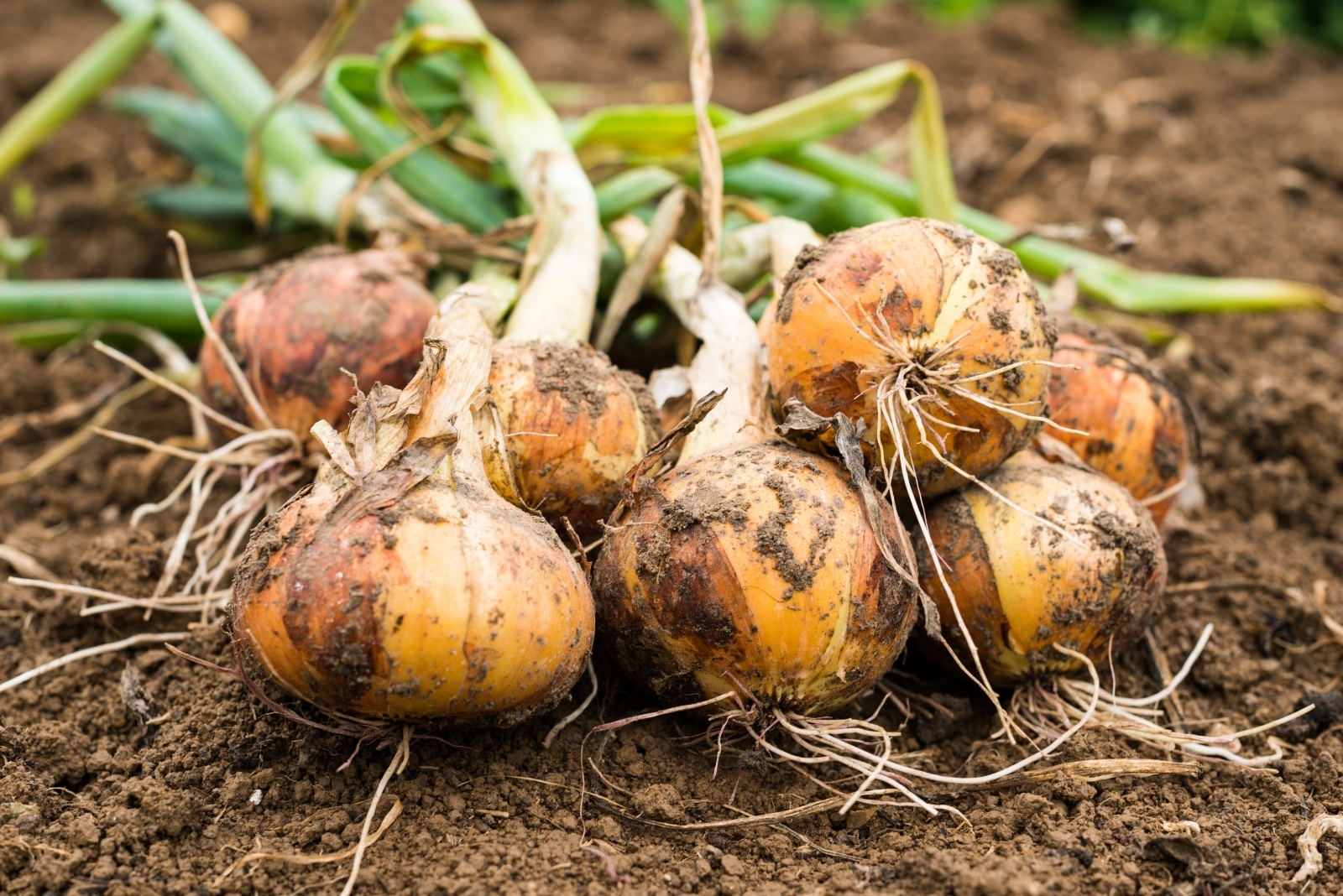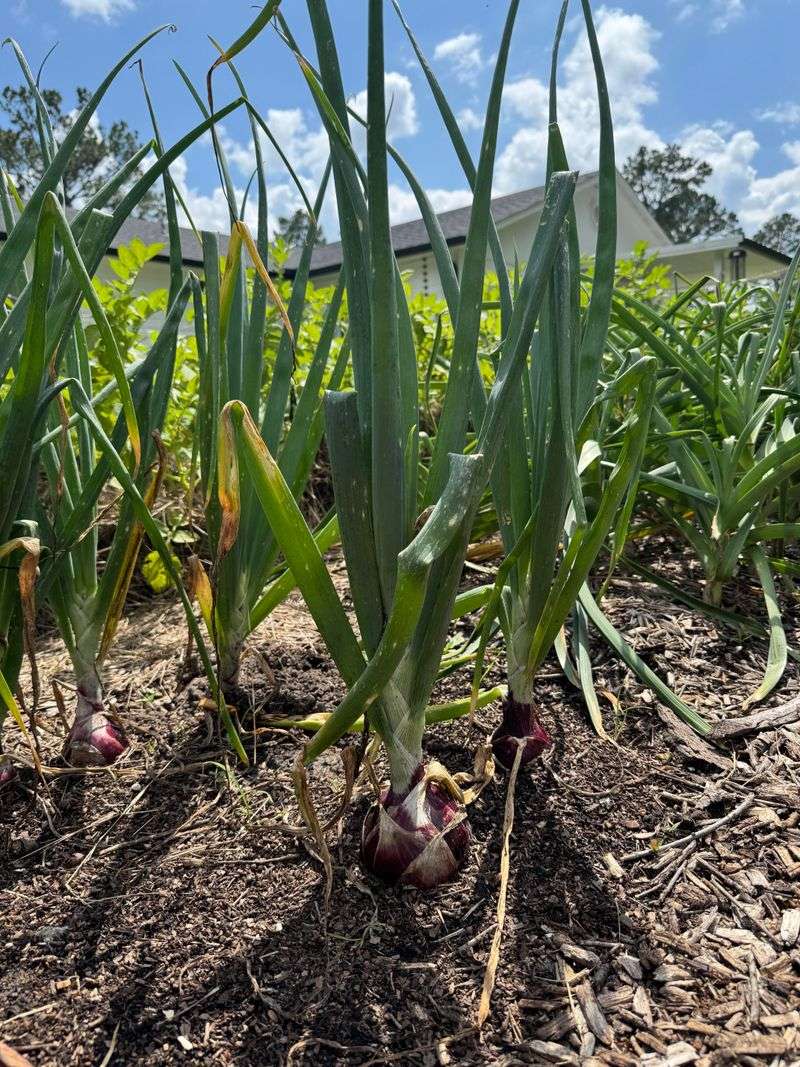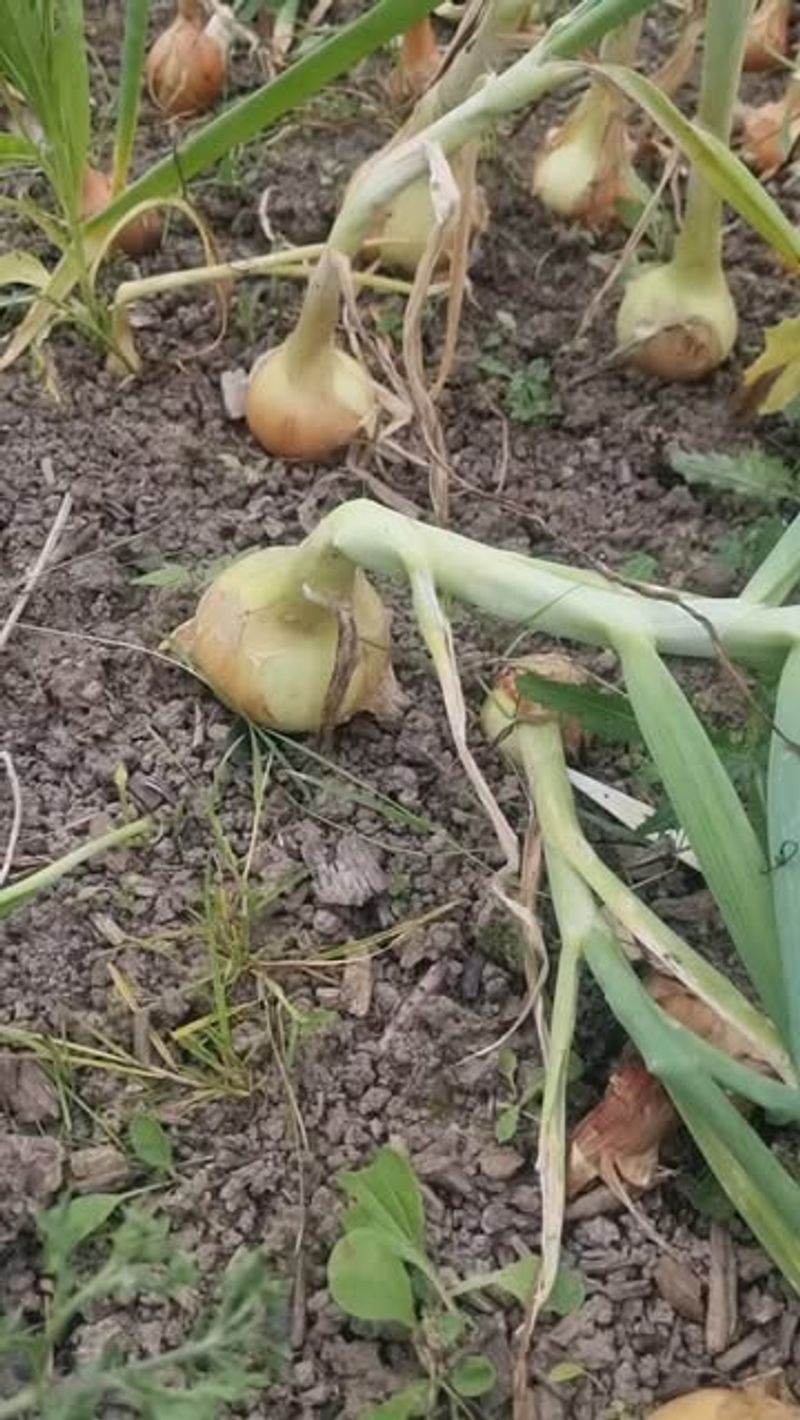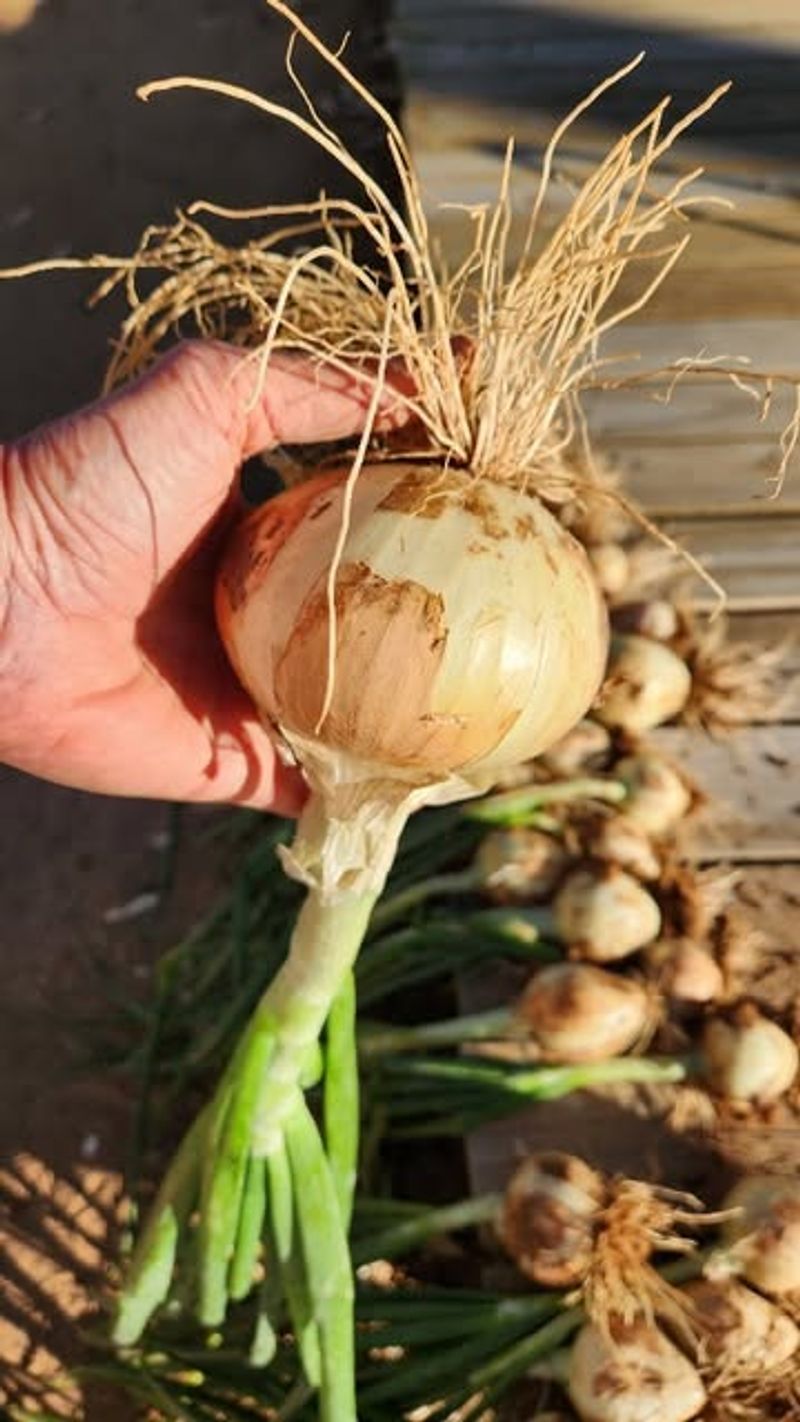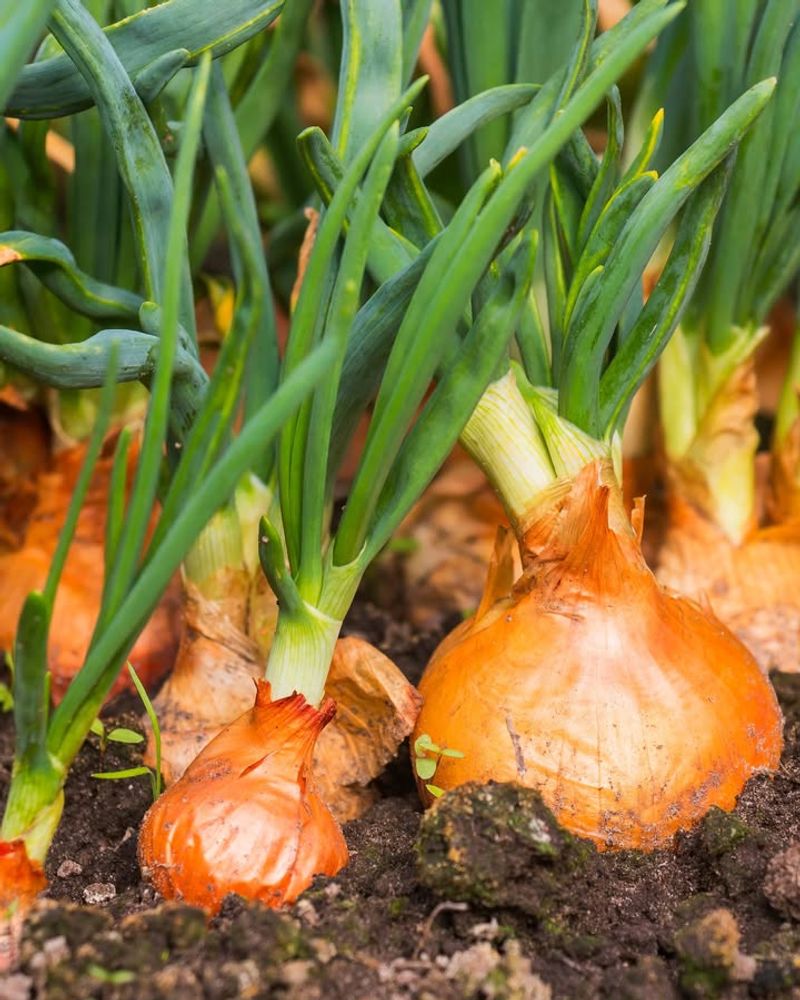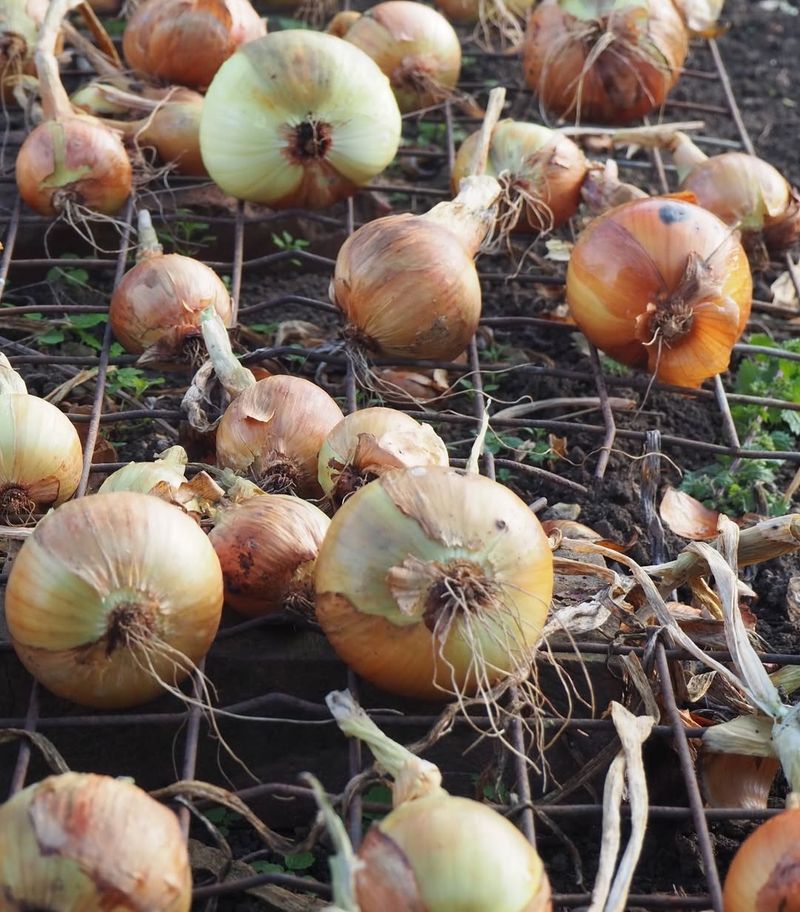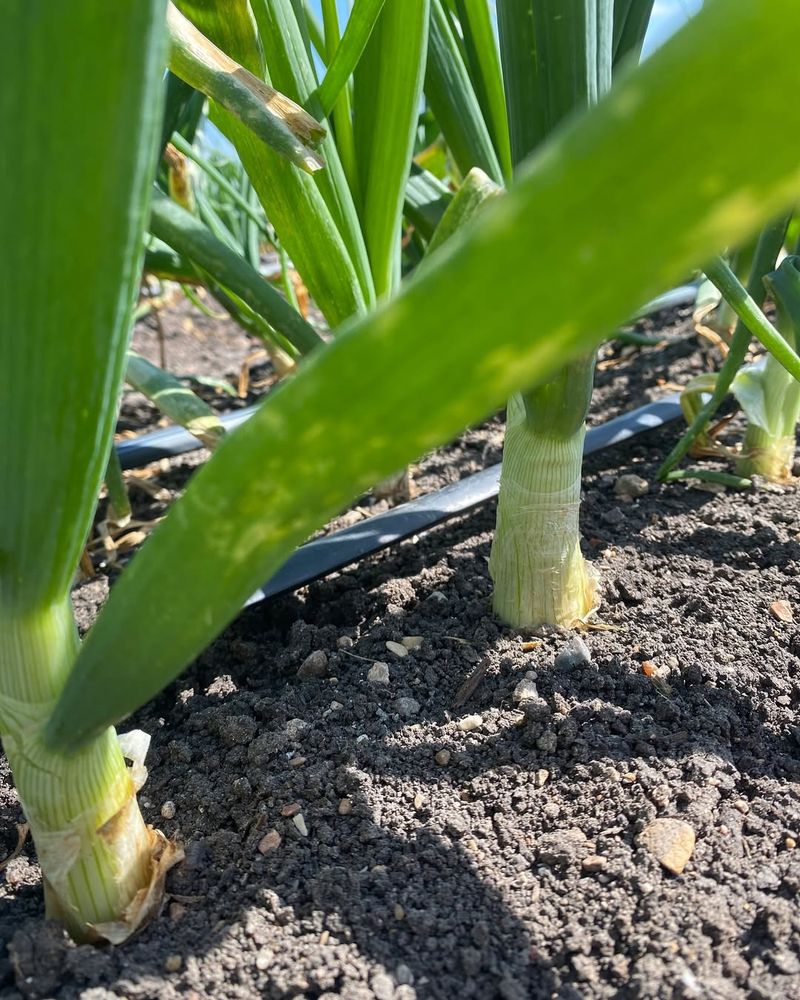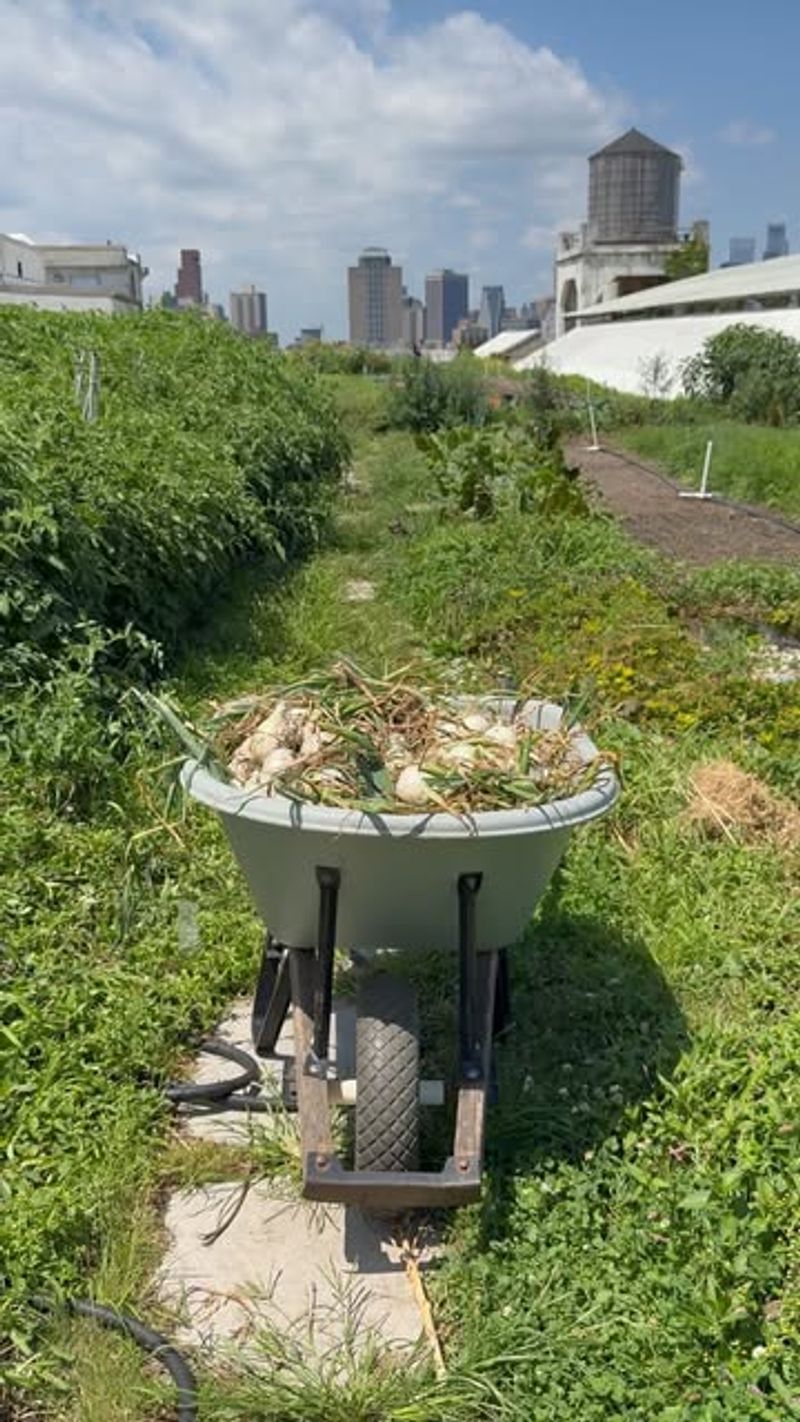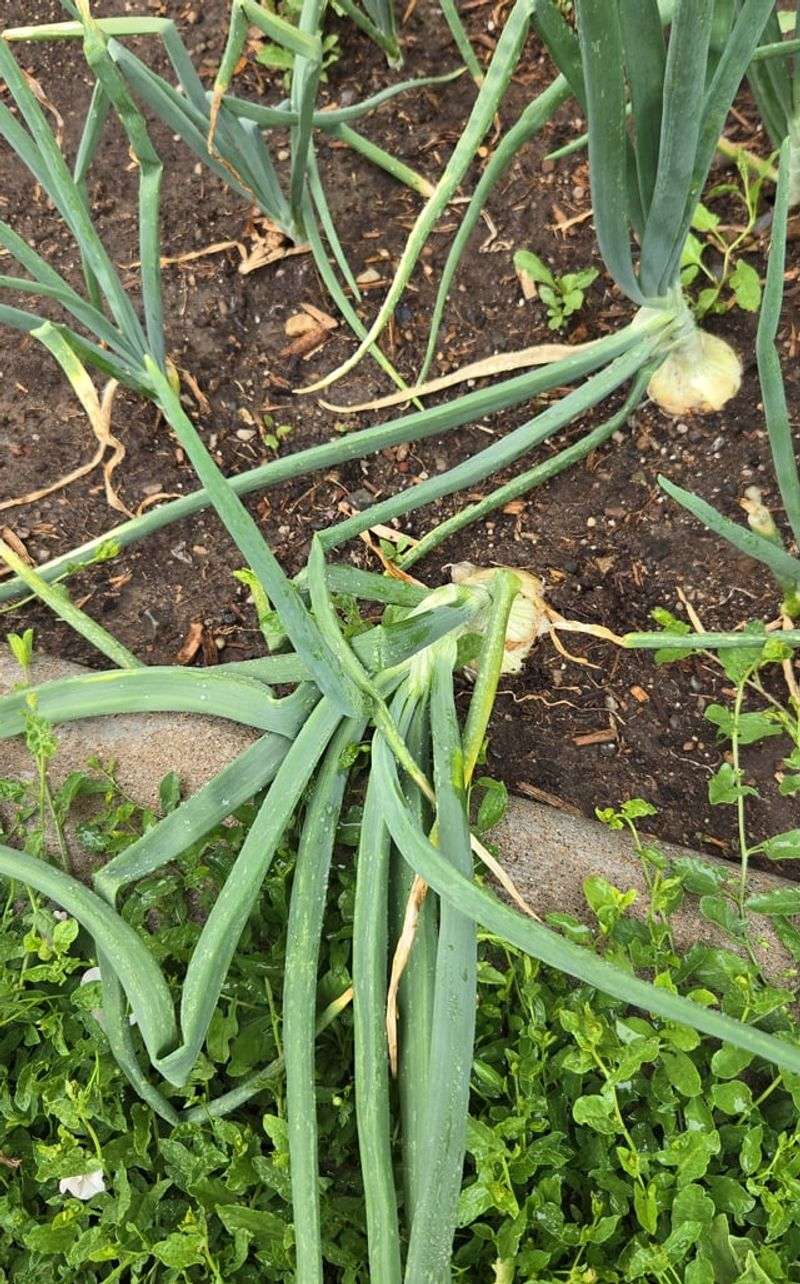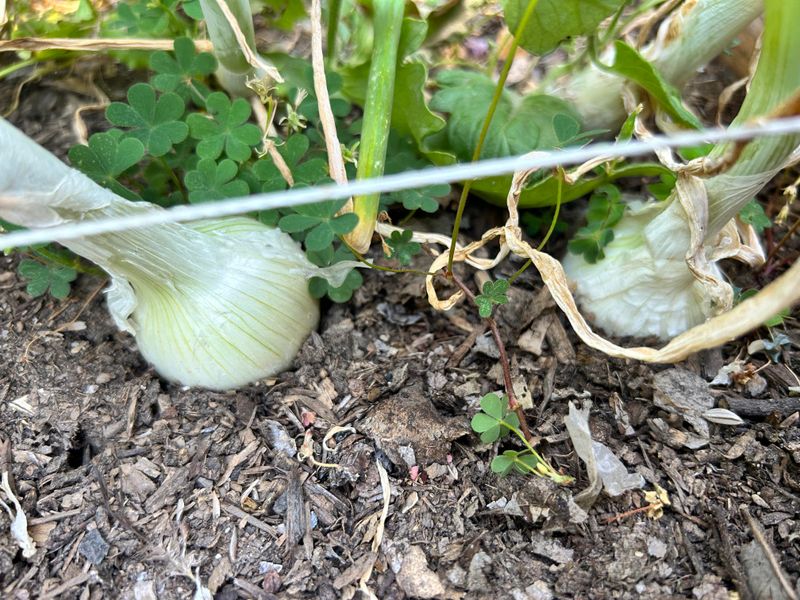Timing is everything when it comes to harvesting onions, and Florida’s climate makes this an art worth mastering. The right signs can mean sweeter, more flavorful onions for your table.
Ignoring them can mean missing peak taste. These 9 tips help Florida gardeners know exactly when to pull their onions.
1. Tops Start Falling Over
When you notice the green stalks bending and flopping over naturally, that’s your onion’s way of saying it’s done growing. In Florida, this usually happens around late spring when bulbs have reached full size. Don’t force them down yourself—let nature do its thing.
Once about half your onion tops have fallen, give them a few more days before pulling. This signals that energy has stopped going to the leaves and the bulb is maturing nicely.
2. Foliage Turns Yellow
Yellowing leaves aren’t always a bad sign—actually, it’s exactly what you want to see before harvest time. As onions mature, chlorophyll breaks down and the vibrant green fades to golden yellow. Florida gardeners should expect this color change as temperatures warm up in late spring.
Wait until most of the foliage has turned before harvesting. A few green leaves are fine, but predominantly yellow tops mean your onions are ready to cure and store.
3. Bulb Necks Soften
Feel where the green stalk meets the bulb—that’s the neck. When it starts getting soft and pliable instead of firm and crisp, your onions are telling you they’re ready. This softening happens as the plant stops sending nutrients upward.
In Florida’s humidity, checking neck texture is crucial because it prevents you from harvesting too early. Gently squeeze a few necks every couple days once tops start falling to gauge readiness across your whole crop.
4. Bulbs Push Above Soil
Ever seen onion bulbs peeking out from the dirt like they’re trying to escape? That’s actually a great indicator they’ve reached full size and are ready to pull. As bulbs swell, they naturally push upward through Florida’s sandy soil.
You’ll notice the papery outer skin becoming visible at ground level. This exposure helps the outer layers dry and form that protective covering onions need for storage, making it the perfect harvest window.
5. Outer Skin Becomes Papery
Run your fingers along the bulb and you’ll feel whether the outer layers have developed that crispy, paper-like texture. This protective coating forms as onions mature and signals they’re ready for harvest and storage. Florida’s sunshine helps this process along beautifully.
If the skin still feels thick and fleshy, give your onions more time in the ground. Papery skin means better storage quality and concentrated flavor that’ll last months in your pantry.
6. Growth Slows Significantly
Pay attention to how quickly your onions are sizing up week by week. When you stop noticing much change in bulb diameter, that means growth has plateaued and harvest time is approaching. In Florida, this typically happens after 90 to 120 days depending on variety.
Mark your calendar from planting day so you know roughly when to start watching closely. Stalled growth combined with other signs confirms your onions have hit their peak.
7. Days to Maturity Reached
Check your seed packet or plant tag for the estimated days to maturity—most onion varieties need 90 to 120 days. Counting from your planting date gives you a reliable harvest window, especially important in Florida where spring weather can be unpredictable.
Use this timeline as a guideline, then combine it with visual cues like falling tops and yellowing leaves. Different varieties mature at different rates, so knowing your specific type helps tremendously.
8. No New Leaf Growth
When your onion plants stop producing fresh green leaves from the center, they’ve shifted focus from foliage to bulb development. This cessation of new growth is a clear sign that harvest is just around the corner. Florida’s lengthening spring days trigger this natural transition.
Look at the center of each plant—if no new shoots are emerging and existing leaves are aging, your onions are finishing up. Combined with other indicators, this confirms perfect harvest timing.
9. Slight Soil Cracking Around Base
Look closely at the soil surrounding your onion bulbs—tiny cracks forming around the base indicate the bulb has expanded to maximum size. As onions swell, they displace soil and create these telltale fissures. Florida’s sandy soil makes this sign especially easy to spot.
These cracks mean the bulb has pushed outward as far as it’ll go and is ready for pulling. It’s nature’s way of showing you the growth phase has ended completely.

